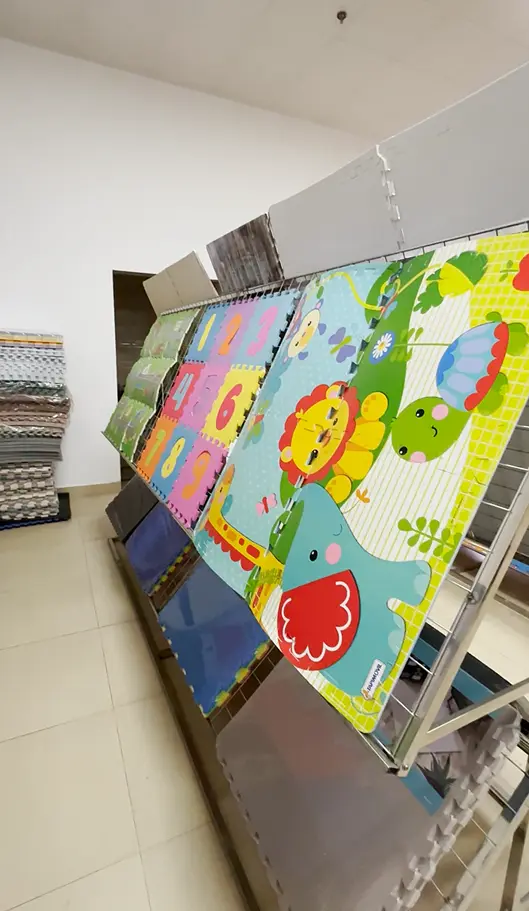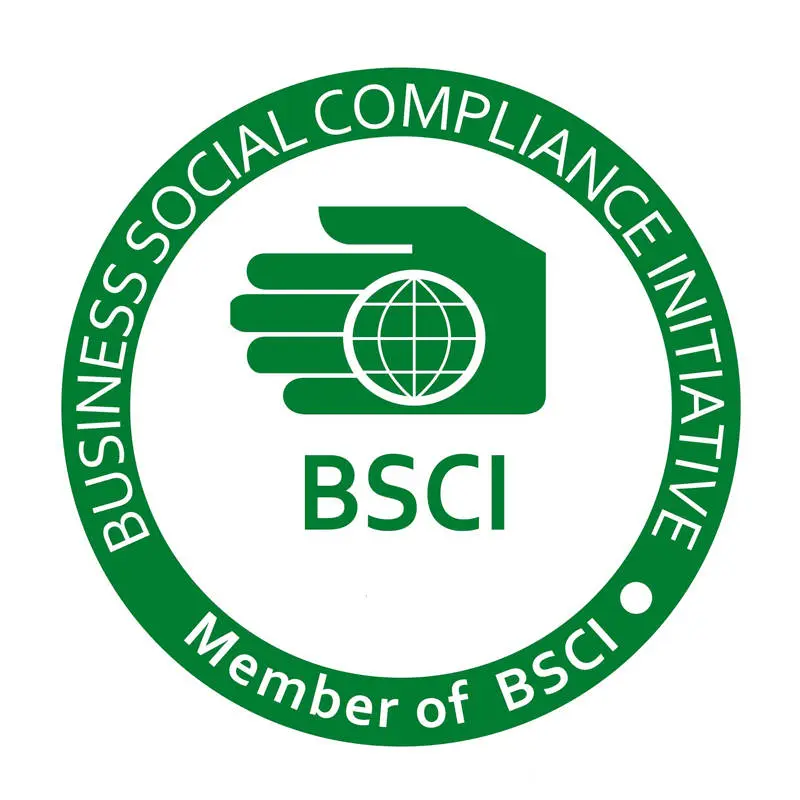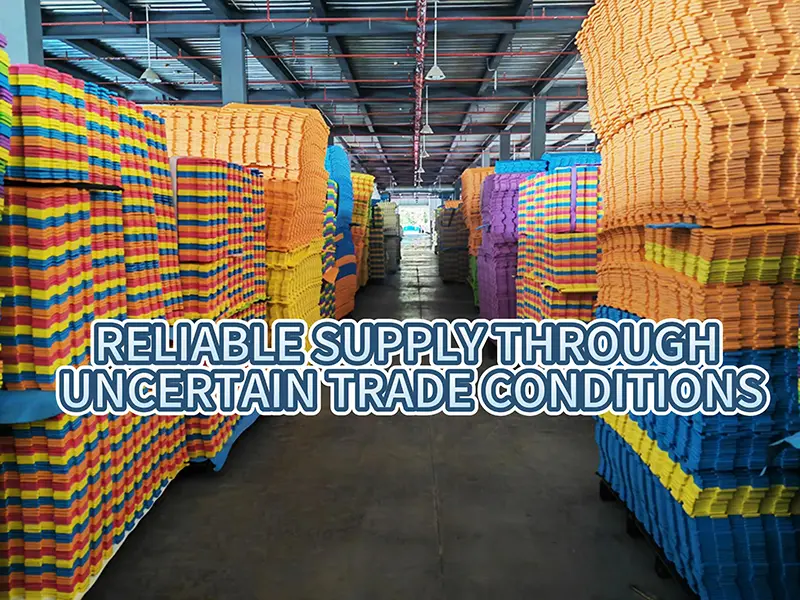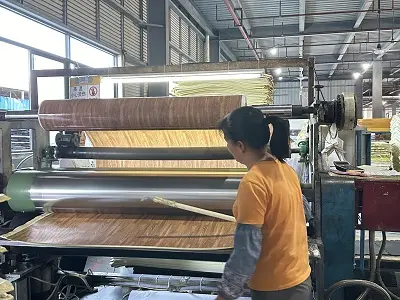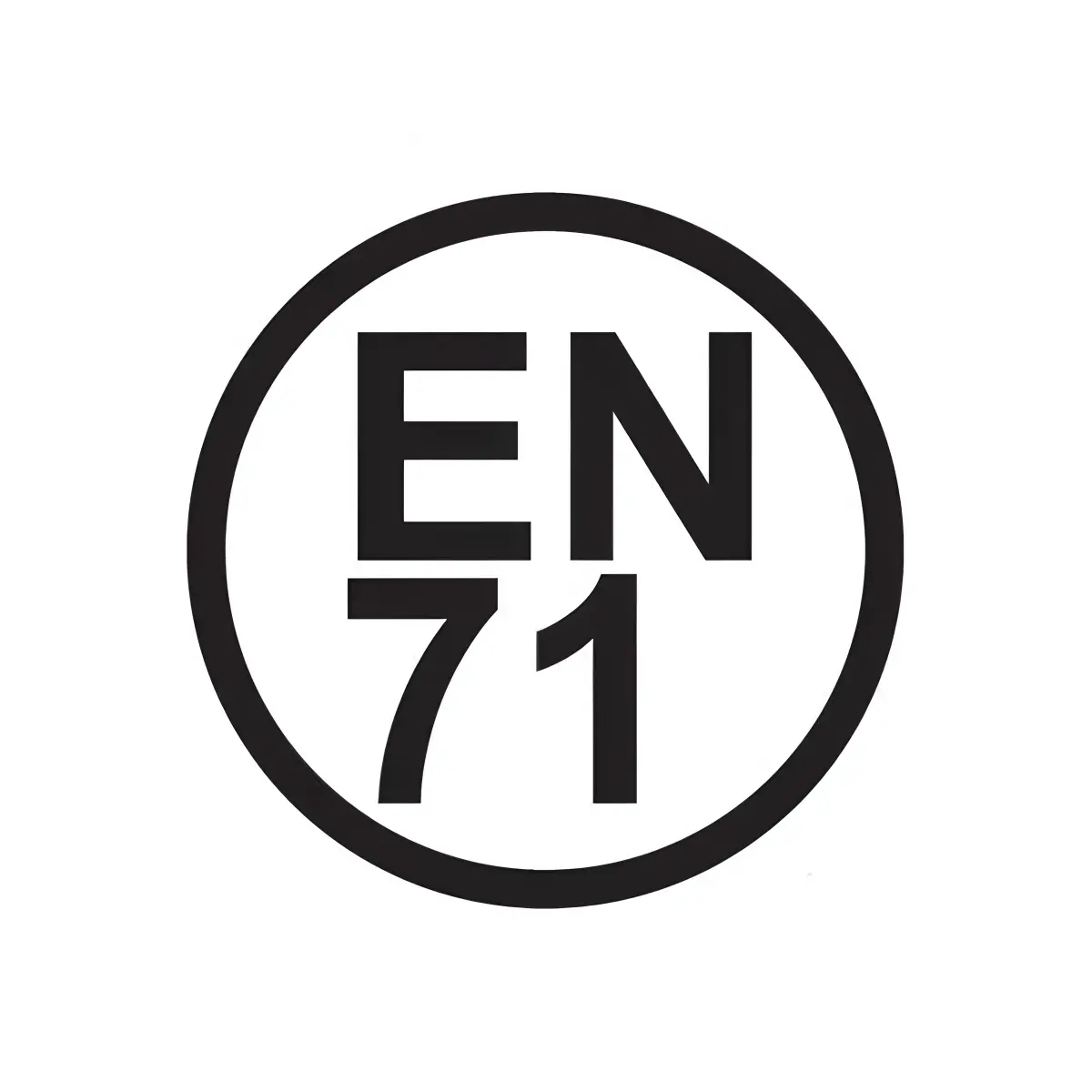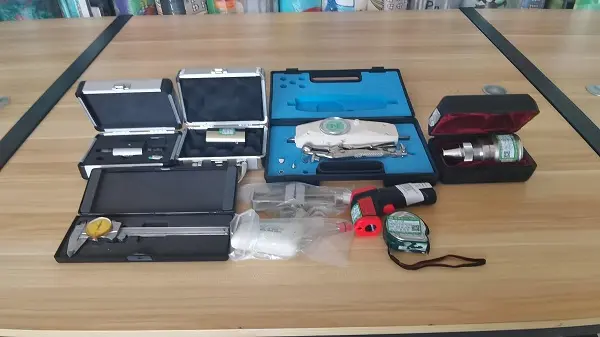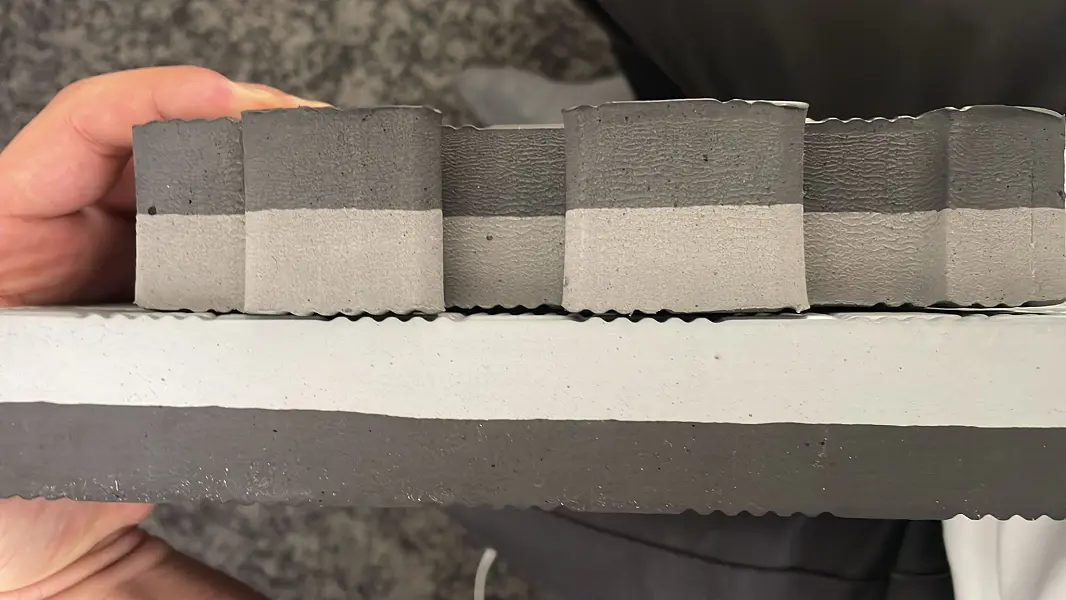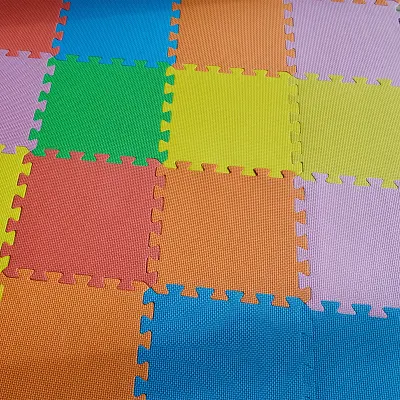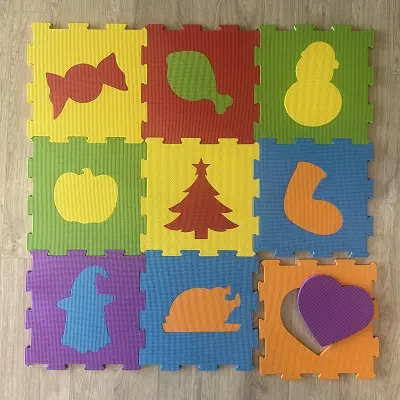Advantages of Heat Transfer Printing on EVA Interlocking Mats
As a professional manufacturer of EVA interlocking mats, we understand the importance of combining product durability with visual appeal. Heat transfer printing technology has become a key innovation in enhancing both the appearance and performance of EVA mats. Here are the core advantages of applying heat transfer printing to EVA mat production:
-
High-Definition Graphics and Vivid Colors Heat transfer printing delivers sharp, high-resolution designs with rich and vibrant colors. Whether it’s intricate patterns or gradient effects, the technology ensures accurate reproduction on the EVA surface. This makes each mat visually appealing and helps meet the market’s increasing demand for aesthetic value.
-
Durability and Abrasion Resistance With heat transfer printing, the design is thermally bonded to the EVA surface, creating a wear-resistant and long-lasting finish. The prints do not easily fade or peel, even with frequent use and cleaning. This extended durability adds value for wholesale buyers looking for high-performance flooring solutions.
-
Support for Customization Heat transfer printing supports both small-batch and large-scale production, making it ideal for customized orders. Logos, unique patterns, and color schemes can be accurately printed to meet branding or design requirements. This is a major advantage for retailers or businesses seeking to differentiate their products in a competitive market.
-
Eco-Friendly and Efficient Production The heat transfer process is clean and efficient—it doesn’t require solvents or traditional inks, reducing environmental impact. Additionally, the streamlined process shortens production time and lowers manufacturing costs, allowing us to offer high-quality products at competitive prices.
-
Our Heat Transfer Production Process In our factory, the heat transfer printing process begins with precise temperature and pressure calibration to ensure optimal adhesion between the film and EVA surface. Our team uses high-quality transfer films and carefully monitors alignment during printing to maintain design consistency.
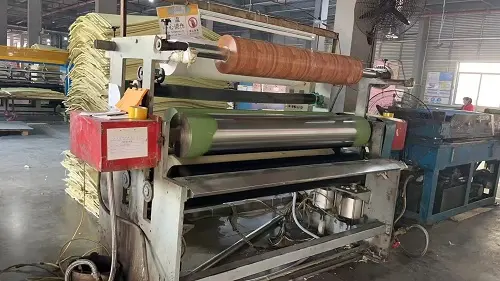 Heat Transfer Machine in Operation
Heat Transfer Machine in Operation
Image: Heat transfer printing machine operating in our workshop. The roller applies both heat and pressure to bond the transfer film onto EVA mats.
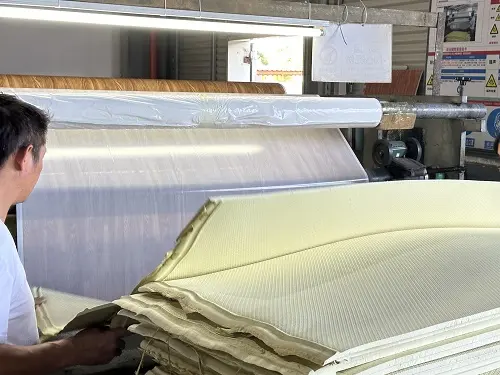 Worker Aligning EVA Mats and Transfer Film
Worker Aligning EVA Mats and Transfer Film
Image: A worker precisely aligning EVA mats with the wood-grain transfer film before the pressing process. Careful manual positioning ensures accurate pattern placement.
After transfer, each mat undergoes strict quality inspection to verify color accuracy, bonding strength, and surface finish. This standardized process helps us maintain product reliability and supports consistent large-scale output for wholesale orders.
Image: High-definition wood-grain pattern printed onto EVA mats. The heat transfer printing process ensures sharp, clear details and vibrant texture, closely resembling real wood grain.
Conclusion Heat transfer printing offers clear advantages for EVA interlocking mats by enhancing visual appeal, increasing durability, supporting customization, and promoting sustainable manufacturing. At our factory, we are committed to leveraging this technology to deliver top-quality mats tailored to the needs of our wholesale partners.




